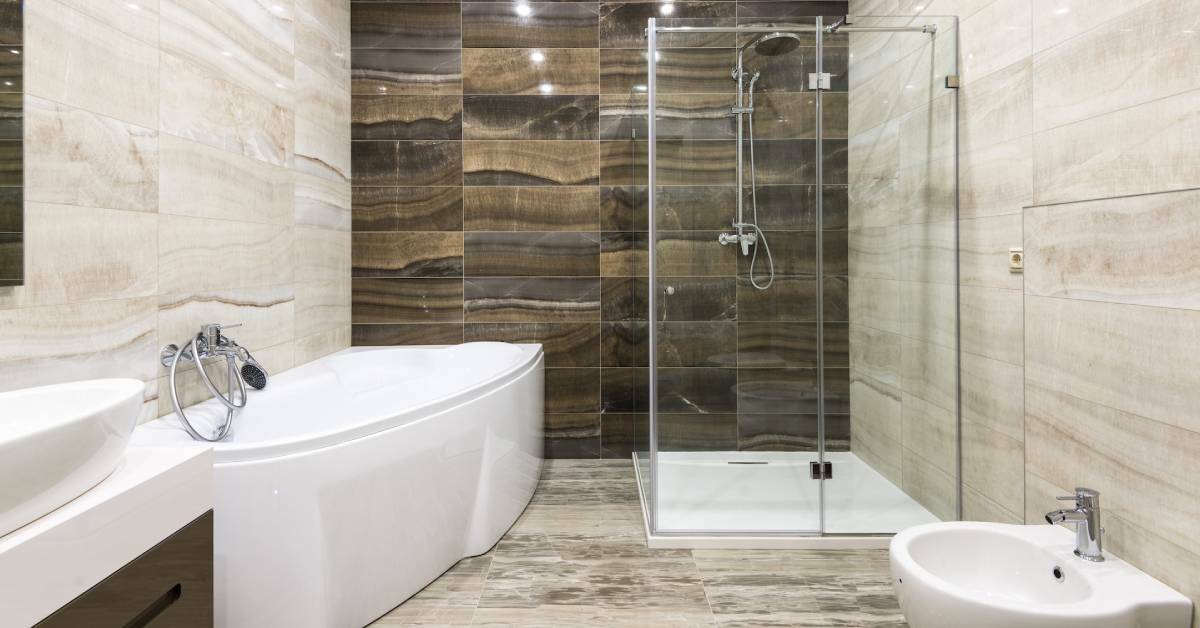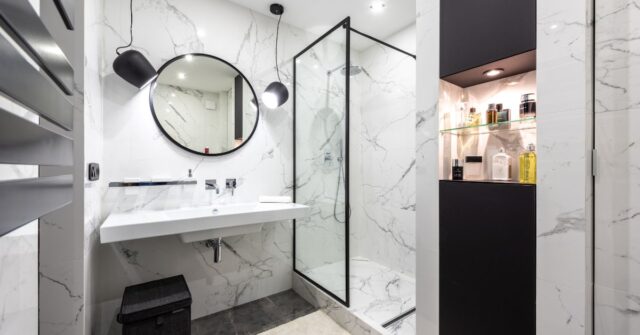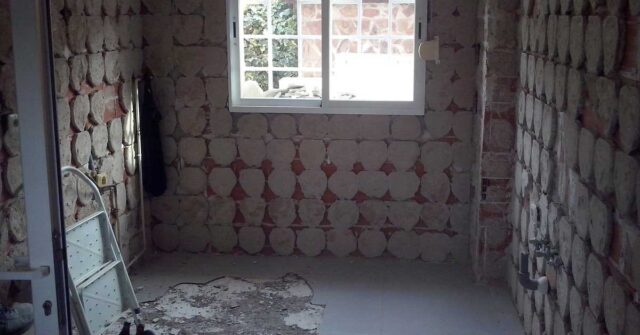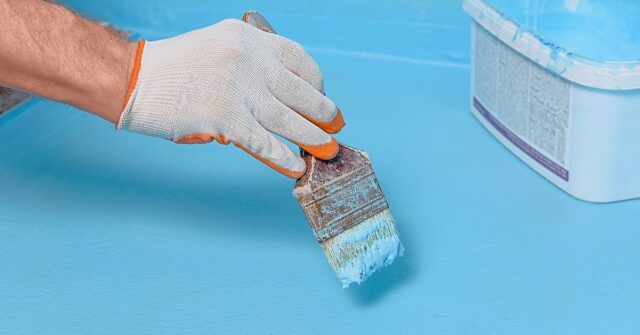Waterproofing a bathroom is an essential step to ensure longevity and maintain the structural integrity of your home.
This guide will walk you through the process of waterproofing your bathroom, specifically tailored to Australian standards and conditions. Let’s begin by understanding these standards.
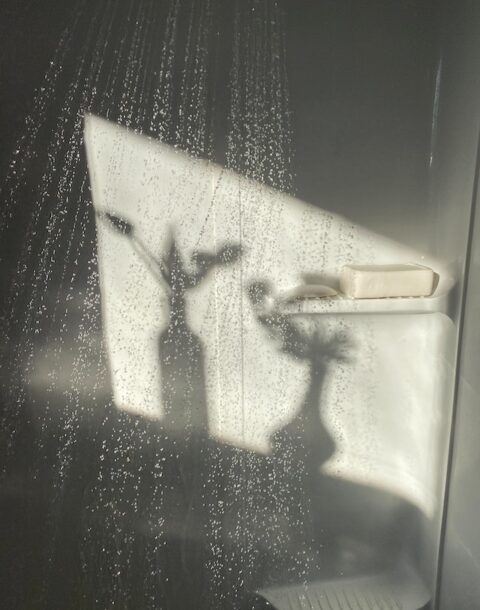
Understanding Australian Standards for Waterproofing Bathrooms
In Australia, waterproofing bathrooms have specific requirements. This is to ensure that the job is done properly, reducing potential damage to the building structure due to water leaks.
In the following sections, we’ll discuss the key standards and why it’s important to comply with them.
AS 3740-2010: Waterproofing of Wet Areas within Residential Buildings
The Australian Standard AS 3740-2010 serves as the primary guide for waterproofing wet areas in residential buildings.
It outlines the minimum requirements needed for waterproofing areas that are frequently exposed to water, like bathrooms.
By adhering to these guidelines, you can ensure the durability and safety of your bathroom.
Importance of Compliance with Australian Building Codes
Compliance with the Australian Building Codes is crucial not just for legal reasons, but also for the safety and durability of your construction.
Building codes, including those related to waterproofing, are designed to ensure that buildings are safe, healthy, and durable places to live in.
Non-compliance can lead to structural issues, costly repairs, and even legal penalties.
Assessing Your Bathroom’s Waterproofing Needs
Before you begin the waterproofing process, it’s essential to understand the unique needs of your bathroom.
Factors such as the age of your home, the current state of your bathroom, and the type of tiles or fixtures you have can all impact your waterproofing needs.
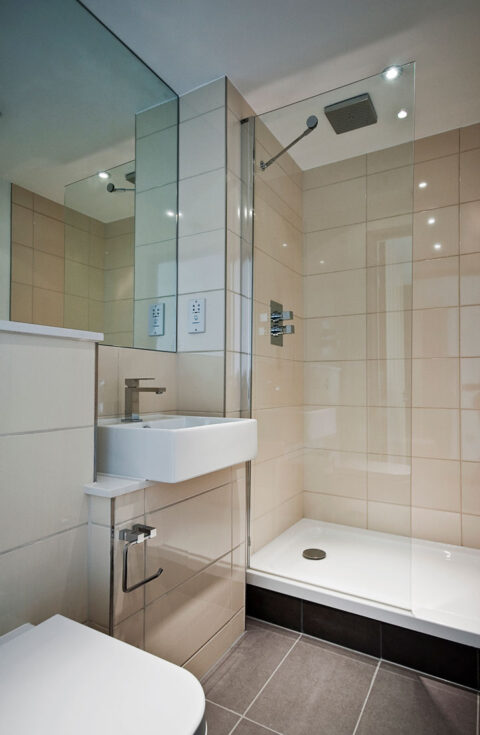
Identifying Potential Problem Areas
Before commencing waterproofing, it’s important to identify potential problem areas that might need extra attention.
These include areas where water is most likely to collect, such as around the shower, bathtub, and sinks, as well as any cracks or gaps in the flooring or walls.
Checking for Existing Water Damage
Before you start waterproofing, it’s crucial to check for any existing water damage in your bathroom. Look out for signs such as peeling paint, mould growth, damp smells, and water stains.
These could indicate a pre-existing issue that needs to be addressed before waterproofing can effectively take place.
The Importance of Proper Drainage
Effective drainage is a key component of any waterproofing strategy. Without proper drainage, water can accumulate, leading to potential leaks and water damage.
Let’s explore how to optimise your bathroom layout for effective drainage and the right type of bathroom drains to consider.
Optimising Bathroom Layout for Effective Drainage
The layout of your bathroom can significantly impact its drainage. The shower, sink, and bathtub should be positioned such that water naturally flows towards the drains.
In addition, the floor should ideally be slightly sloped towards the drain to facilitate water flow. A professional plumber can assist in determining the optimal layout for your bathroom.
Choosing the Right Bathroom Drains
Choosing the right drain is equally important. Consider factors such as the size of the drain, the rate of water flow it can handle, and its compatibility with your bathroom design.
In Australia, it is common to use grated drains in showers, but you might also consider strip or tile insert drains, depending on your bathroom’s design.

Selecting Waterproofing Materials
There are several waterproofing materials available in the market, each suited for different applications. The choice of materials can impact the effectiveness of your waterproofing job.
In this section, we’ll discuss the different types of waterproofing membranes, adhesives, sealants, and essential tools for waterproofing.
Understanding Different Types of Waterproofing Membranes
Waterproofing membranes are a critical component in waterproofing your bathroom. They create a barrier that prevents water from seeping into the structure of your home.
There are several types available, including liquid membranes, sheet membranes, and cementitious membranes.
The choice depends on your specific needs, the area being waterproofed, and the local climate conditions.
Waterproofing Adhesives and Sealants
Adhesives and sealants are used to ensure a complete and secure waterproof barrier.
Waterproof adhesives are used to secure the waterproofing membrane, while sealants are used to fill gaps and prevent water seepage at the junctions of different surfaces.
It’s crucial to choose products that are suitable for wet areas and are resistant to mould and mildew.
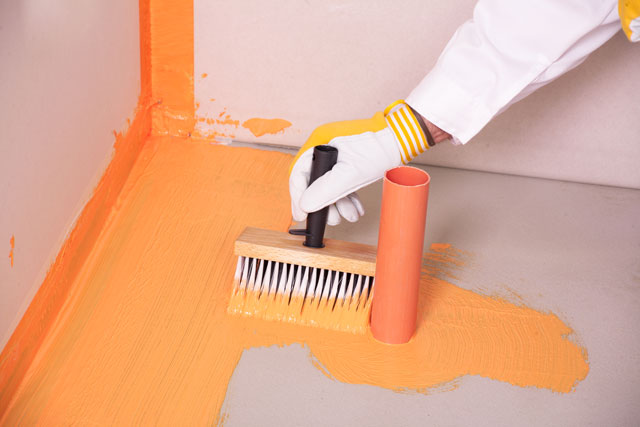
Essential Tools for Waterproofing
Having the right tools can make the waterproofing process easier and more efficient.
Some of the essential tools you’ll need include a measuring tape, a utility knife for cutting the membrane, a trowel for applying the adhesive, and a roller for applying the membrane.
Always ensure you have all the necessary tools on hand before you start the waterproofing process.
Preparation for Waterproofing
Proper preparation is key to effective waterproofing. This involves preparing your bathroom surfaces and addressing any pre-existing water damage. Let’s explore these steps in more detail.
Preparing Your Bathroom Surfaces
Surface preparation involves cleaning the areas to be waterproofed to remove any dust, dirt, or loose material. The surface should be dry and free of any oil or grease.
Any cracks or gaps should be filled with a suitable filler. If you’re working with a newly constructed bathroom, ensure that the concrete has cured fully before you start the waterproofing process.
Handling Pre-existing Water Damage
If you’ve identified any pre-existing water damage during your initial inspection, it’s crucial to address this before proceeding with waterproofing.
This might involve repairing any structural damage, treating mould growth, or replacing damaged fixtures. You might need to involve a professional if the damage is extensive.
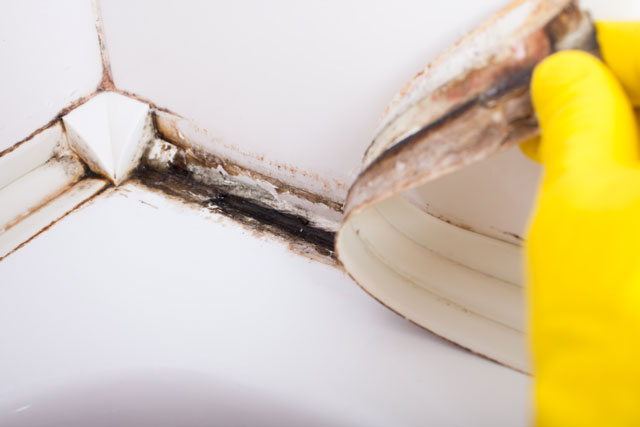
Waterproofing Process
Once your bathroom is adequately prepared, you can move on to the actual waterproofing process.
This involves applying the primer, the waterproofing membrane, and sealing joints and connections. Here’s how to do each of these steps.
Applying the Primer
The primer is applied before the waterproofing membrane to ensure good adhesion between the membrane and the surface.
Use a brush or roller to apply the primer evenly across all areas to be water-proofed.
Make sure to follow the manufacturer’s instructions regarding drying times before proceeding to the next step.
Applying the Waterproofing Membrane
The waterproofing membrane is the main barrier against water. Depending on the type of membrane you’re using, it can be painted, rolled, or even sprayed on.
Ensure it’s applied evenly, with no gaps or bubbles. Pay extra attention to corners and edges, as these are areas where water is most likely to penetrate.
Sealing Joints and Connections
After applying the waterproofing membrane, you’ll need to seal all joints, corners, and connections.
This includes areas where the floor meets the wall, around the bathtub or shower, and around any drains or fixtures.
Use a high-quality waterproof sealant for this step and ensure it’s applied thoroughly to prevent any water seepage.
Key Areas to Waterproof
It’s crucial to ensure that all areas in the bathroom that are likely to get wet are adequately waterproofed.
This includes the shower area, the bathroom floor, walls around the bathtub, and window and door frames. Let’s discuss each of these areas in more detail.
Shower Area
The shower area is undoubtedly the wettest part of any bathroom and hence needs special attention during the waterproofing process.
All surfaces within the shower, including the floor, walls, and around the drain, should be thoroughly waterproofed to prevent water damage.
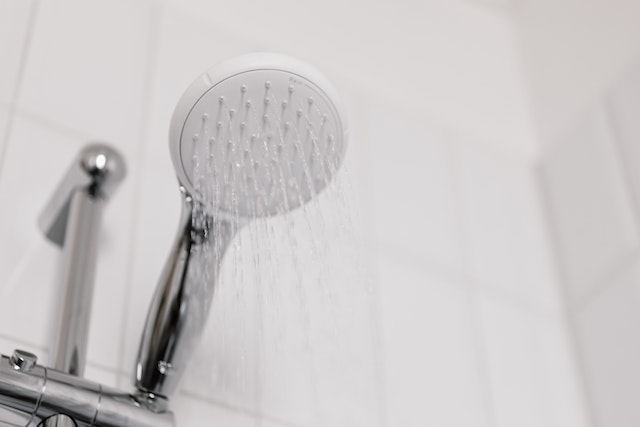
Bathroom Floor
Waterproofing the bathroom floor is essential to prevent water from seeping into the subfloor and causing damage.
Waterproofing should extend from the floor onto the walls to a height of at least 180mm.
For floors with a shower, the entire floor should be waterproofed and extended 100mm up the walls.
Walls Around the Bathtub
The walls around the bathtub can also be exposed to a significant amount of water, especially if the shower is located over the bathtub.
These walls should be waterproofed up to a height of 1800mm from the floor. It’s also important to waterproof around any taps or fittings in these walls to prevent water seepage.
Window and Door Frames
Water can easily find its way around window and door frames if they are not properly sealed. Waterproof these areas by applying a sealant around the frame, ensuring a tight seal.
Pay extra attention to the lower edges of the frames, as water tends to accumulate in these areas.
Testing the Waterproofing
After the waterproofing process is complete, it’s crucial to test the waterproofing to ensure there are no leaks.
This can be done by conducting a water test and looking for signs of leakage. Let’s explore how to do this.
How to Conduct a Water Test
A water test involves running water in the shower or filling the bathtub with water and checking for any signs of leakage.
Plug the drain and fill the area with water up to a level that is higher than the waterproofing.
Leave the water standing for several hours or overnight, and then check for any signs of leakage underneath or around the waterproofed area.
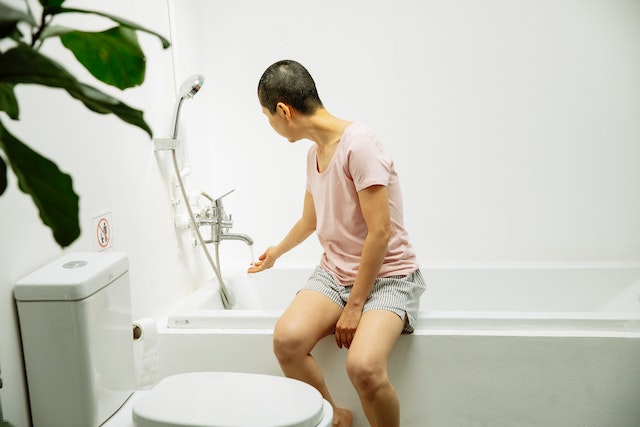
Spotting Signs of Leakage
Signs of leakage can include water stains, damp smells, or visible water under or around the waterproofed area.
If you spot any of these signs, it indicates that the waterproofing has not been successful and may need to be redone or repaired.
It’s important to address any issues immediately to prevent further damage.
Maintenance of a Waterproofed Bathroom
Once your bathroom is effectively waterproofed, it’s crucial to maintain it properly to prolong its lifespan.
This involves regular cleaning, checking for leaks, and promptly repairing any damage. Here’s a closer look at these steps.
Regular Cleaning
Regular cleaning of your bathroom helps prevent the build-up of soap scum and mould, which can degrade waterproofing materials over time.
Use non-abrasive cleaners and soft cloths to clean your bathroom surfaces.
Avoid harsh chemicals that could potentially damage the waterproofing membrane or sealants.
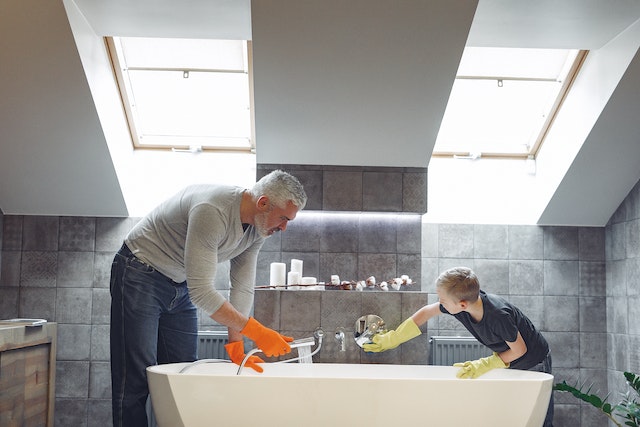
Checking for Leaks
Regularly inspect your bathroom for any signs of leaks. This includes looking for water stains, damp smells, or visible water around the bathroom.
If you spot any of these signs, it’s crucial to identify the source of the leak and address it immediately to prevent further damage.
Repairing Damage Promptly
If your waterproofing is damaged, it’s important to repair it promptly to prevent water from seeping into your home’s structure.
This might involve reapplying the waterproofing membrane or sealant, or in severe cases, it might require professional repair.
When to Hire a Professional
While it’s possible to waterproof your bathroom yourself, there are times when hiring a professional might be the best option.
This could be due to the complexity of the job, a lack of time or experience, or specific legal requirements. Here’s when you should consider hiring a professional.
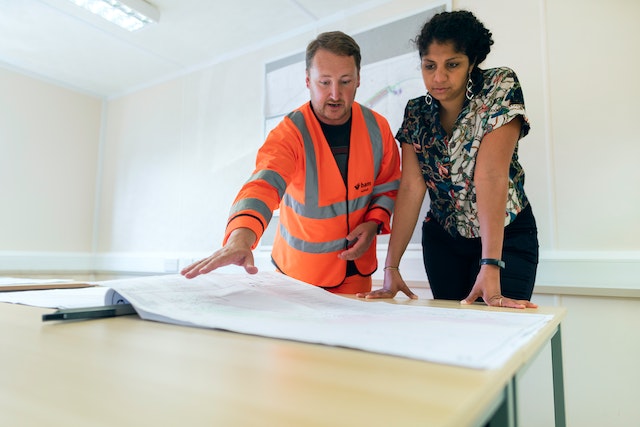
Complex or Large-Scale Jobs
If your bathroom is large, has a complex layout, or if you’re planning a complete bathroom renovation, it might be best to hire a professional.
They have the experience and tools to handle large-scale or complex jobs efficiently and effectively.
Lack of Time or Experience
If you don’t have the time to devote to waterproofing your bathroom, or if you’re not confident in your ability to do the job correctly, hiring a professional can save you time and stress.
They can also ensure the job is done right, helping to prevent future water damage.
Legal Requirements
In some parts of Australia, waterproofing is considered a major building service, and it’s legally required to be done by a registered building practitioner.
If you’re unsure about the legal requirements in your area, it’s best to consult with a professional.

